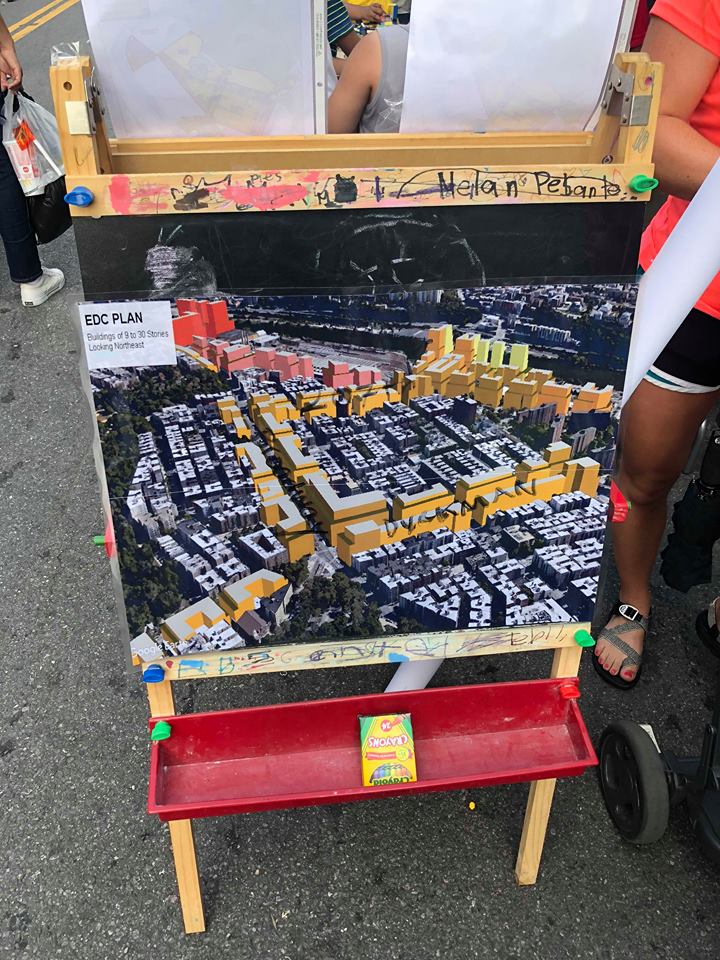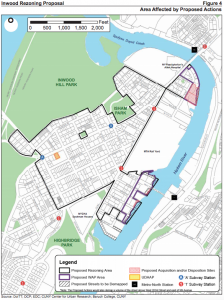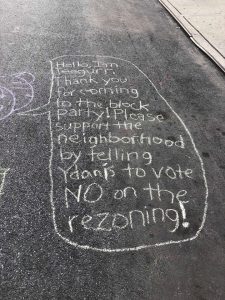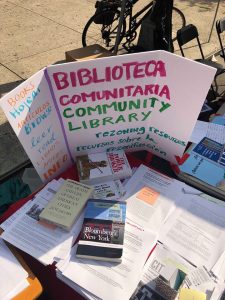(A map of the Inwood Rezoning Area. Source: New York City Economic Decelopment Corporation)
For the second segment of my research about New York City Mayor Bill De Blasio’s housing policy, I found myself being naturally steered toward Manhattan’s northernmost neighborhood, Inwood. One of the several neighborhoods targeted for rezonings by the De Blasio administration, Inwood is a vibrant, predominantly Dominican community that stands as one of the last bastions of affordability, both in New York County and the city at large. The reason I’ve felt compelled to study Inwood in particular is the sheer amount of highly visible community resistance against the targeted rezonings, and the way politicians like Councilman Ydanis Rodriguez and Manhattan Borough President Gale Brewer have been forced to contend with the fears and frustrations of their constituents.
(A plea to Inwood residents to tell Councilman Ydanis Rodriguez to halt the rezoning, written in chalk on Post Street at BLOCK PARTY FOR A JUST REZONING)
On July 28th, I attended an event called “BLOCK PARTY FOR A JUST REZONING” organized by various local tenant and community groups from the neighborhood. Occupying the densely residential block of Post Avenue between Sherman Ave and Inwood’s main commercial strip, Dyckman Street, community members operated various tables, including a Rezoning Library (complete with books like Robert Caro’s The Power Broker and Julian Brash’s The Bloomberg Way), and a table showing the blueprints for what a rezoning of Inwood’s commercial hub would look like. In addition, a tenants’ organization asked children to write what they love about Inwood on a poster that was hung high for all to see.
(Sample tables at the block party. Left shows the NYC EDC’s projections for what an upzoning of Inwood’s commercial hub would look like. Right shows the rezoning resources laid out at the pop-up community library).
As performers danced and sang infectious bachata music in front of a large poster that read “DON’T ZONE US OUT” (perhaps a reference to Terreform Urban Research’s recent book Zoned Out: Race, Displacement, and City Planning in York City edited by Tom Angotti and Sylvia Morse — also on sale at some of the stands), there was a prevalent sense of outright fear. The few attendees of this event that I spoke to felt extremely concerned by what they see as a deliberate attempt to induce gentrification, strip the neighborhood of its working class Dominican identity, and bring in an influx of young white professionals. I even saw Councilman Rodriguez walking around the event, patiently listening as infuriated community members voiced their concerns to him.
This controversy came to a bit of a head on August 2nd, when several Inwood community members led an overnight occupation of Councilman Rodriguez’s office on 177th street. In response, Rodriguez took to Twitter to list out the potential benefits of the rezoning, such as “500 million in investments for jobs, education, transportation, art & parks,” as well as a variety of improvements in infrastructure, landmark districts, and educational options.




